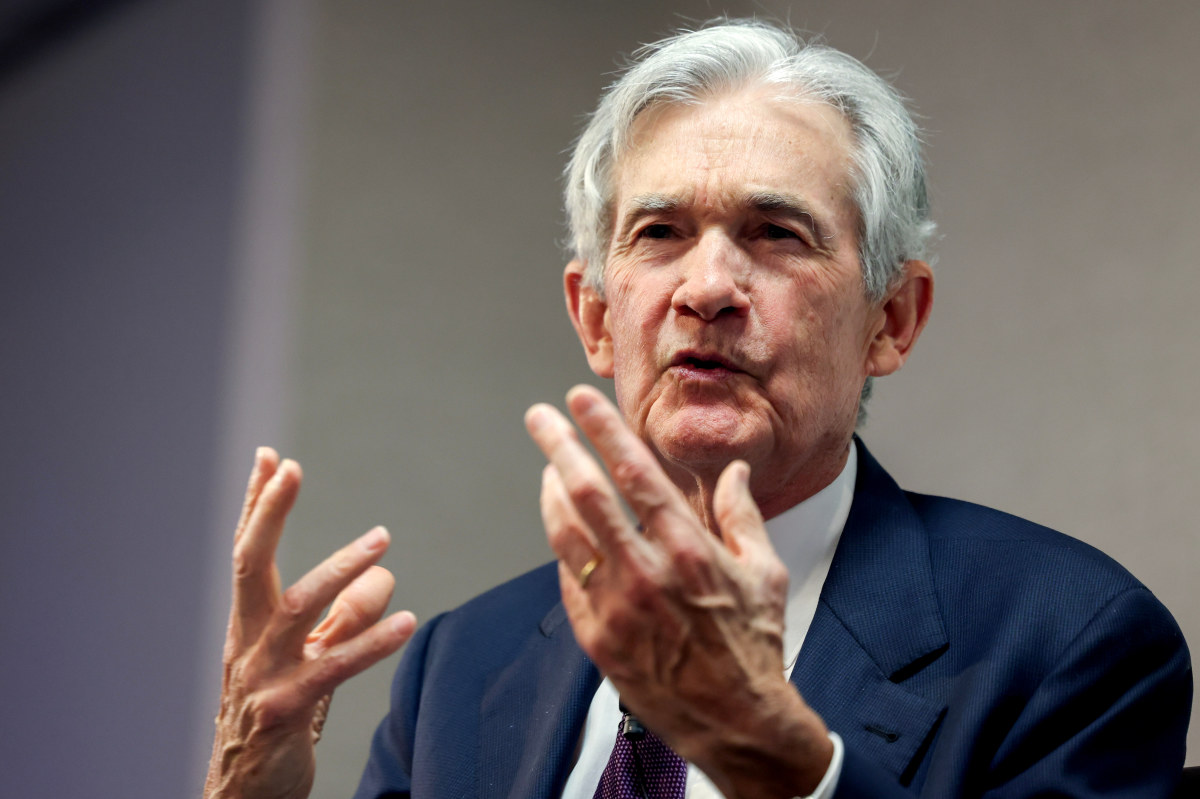Attention shoppers: If you thought the prices of kitchen tables and car insurance ticked up last month, those tingles were right on the money.
By the same token, bargain hunters found deals on airline fares, new and used vehicles and the gasoline to power all three modes of transportation.
💵💰Don’t miss the move: Subscribe to TheStreet’s free daily newsletter💰💵
Overall, U.S. inflation rates rose less in May than expected despite the uncertainty of the impact of tariffs and trade wars. The focus now shifts to whether the high interest rates on consumer loans — including credit cards and home mortgages — will dip.
In short, the Bureau of Labor Statistics has spoken with the latest monthly CPI figures and now it’s up to the Federal Reserve Board to act, or not, on high post-pandemic interest rates.
 Jerome Powell, chairman of the US Federal Reserve, is struggling to manage interest rates amid sticky inflation and job losses.
Jerome Powell, chairman of the US Federal Reserve, is struggling to manage interest rates amid sticky inflation and job losses.
May CPI inflation rates impact consumers, interest rates
The May CPI figures rose slightly to 2.4% from last year, with the monthly core CPI rate stripped of volatile food and energy prices up 0.1%. The overall inflation rate also moved up 0.1%, in part because gasoline and, yes, egg prices dipped. Experts were expecting a monthly core hike of 0.2%
Related: Fed Chair hit with savage message on interest rates
These new numbers, released June 11, are slightly hotter than the April figures, and don’t reflect, according to experts, the impact of President Trump’s tariffs trickling down into your wallets.
Trump, meanwhile, took a break from touting his administration’s new trade deal with China on his Truth Social platform to exhort that the Fed once again cut the Federal Funds Rate in light of the May CPI rate: “GREAT NUMBERS! FED SHOULD LOWER ONE FULL POINT…SO IMPORTANT!!!
The Federal Reserve sets monetary policy to keep the nation’s inflation and unemployment rates low at the same time.
This dual mandate is often at odds because higher interest rates lower inflation but hike the loss of jobs, while lower interest rates decrease unemployment rates but increase inflation.
The May jobs data from the Labor Department were slightly higher than expected but down from April. Unemployment is 4.2%, historically low, but up from 3.4% in 2023.
Absent a big uptick in unemployment, Fed watchers’ attention is now firmly on inflation. The Fed’s unofficial goal is core inflation (inflation minus volatile energy and food prices) of 2%. PCE inflation is the Fed’s favored measure. In April, core PCE was 2.5%.
May Labor Department figures on jobs were slightly higher than expected but down from April. This soft jobs report followed by the May CPI number, has Fed watchers mulling whether the board might slash the Federal Funds Rate by 0.25% from 4.25% to 4.50% to 4% to 4.25% this summer.
And that’s it for the rest of the year.
Related: Fed official revamps interest-rate cut forecast for rest of this year
The Federal Funds Rate is the rate banks charge overnight to borrow money. The Federal Open Market Committee controls that rate, so when it goes up, so does the cost of borrowing money. Hence, it’s more expensive for consumers, as this impacts all sorts of interest rates in the economy. When mortgage rates are high, the housing market dips because it is more expensive to buy houses.
Mortgage rates are tied to 10-year Treasury Bond Yields, which are widely considered the risk-free rate in financial models.
So when Treasury Yields rise, borrowing for businesses and consumers becomes more expensive. (This is why your credit-card bills have bodaciously high interest rates.)
Federal Reserve mulls interest rate moves
Hence, with inflation relatively stable, certain market watchers aren’t optimistic that the FOMC will declare a hefty cut to the Federal Funds Rate when it meets on June 17 and June 18.
More Economic Analysis:
- Hedge-fund manager sees U.S. becoming Greece
- A critical industry is slamming the economy
- Reports may show whether the economy is toughing out the tariffs
Trump has been both vocal and volatile that interest rates should be slashed, and pronto.
The president has made escalating demands directed at Federal Reserve Board Chair Jerome Powell, including a litany of the president’s trademark nasty nicknames, such as “Major Loser” and “Mr. Too Late.”
Additional highlights of the May CPI report include the price of shelter, which at 0.3 percent led all the higher seasonally adjusted rates for medical care, insurance, household furnishing, personal care, and education. For consumers browsing for a new pair of kicks or a summery frock, apparel prices also fell.
Experts say the impact of the economic chaos of tariffs and the trade wars on all consumer goods and services may not be felt in your wallets for another three to six months. Some businesses are choosing to absorb all the tariffs, which are essentially a sales tax on imported goods. Others, especially small businesses with tight margins, are passing the cost of the tariffs onto their customers.
The CME’s closely watched FedWatch tool now projects chances of a rate cut in July at 16.5%, up from 14.4% on June 10.
Related: Billionaire fund manager sends strong message on Fed Chair Powell’s future
